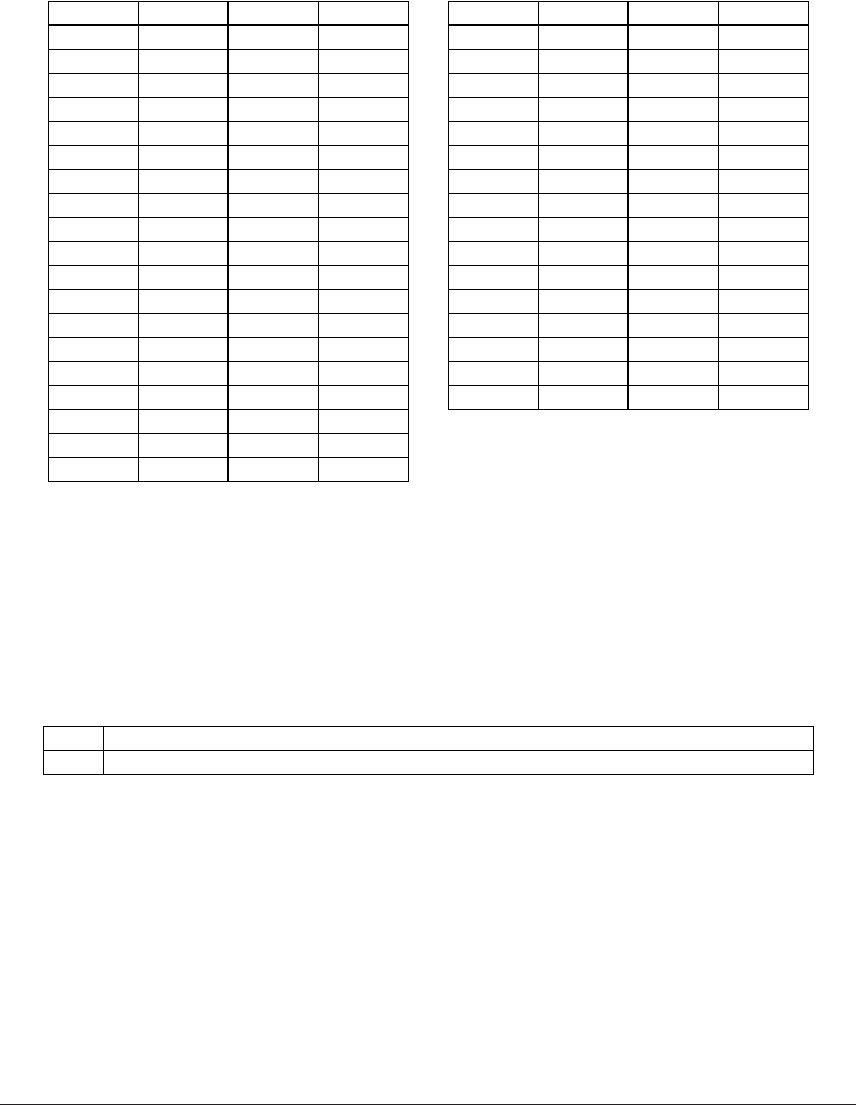
CHAPTER 11: MELODY ASSEMBLER
S5U1C63000A MANUAL EPSON 273
(S1C63 FAMILY ASSEMBLER PACKAGE)
(2-4) Pitch data
The range for selecting pitches differs according to the reference frequency that can be selected from
the [Generate] dialog box of winmla. The frequency should be selected according to the the OSC1
oscillation circuit.
Table 11.4.4.4 shows the correspondence between pitches and HEX codes (example) for each reference
frequency. In melody data, pitch data should be described.
Table 11.4.4.4 Pitch Data (example)
Pitch data
D4
D4#
E4
F4
F4#
G4
G4#
A4
A4#
B4
C5
C5#
D5
D5#
E5
F5
F5#
G5
G5#
Reference frequenc: 38.4 kHz
HEX data
04
12
20
2F
3B
44
51
5B
65
6C
74
7C
84
8D
92
98
9E
A4
AB
Pitch data
A5
A5#
B5
C6
C6#
D6
D6#
E6
F6
F6#
G6
G6#
A6
A6#
B6
C7
C7#
D7
D7#
HEX data
B1
B5
B8
BC
C0
C4
C8
CD
CE
D3
D4
D9
DB
DC
DE
E0
E2
E4
E6
Pitch data
C4
C4#
D4
D4#
E4
F4
F4#
G4
G4#
A4
A4#
B4
C5
C5#
D5
D5#
HEX data
0A
18
27
33
3F
48
55
5F
66
71
79
81
89
8E
94
9D
Pitch data
E5
F5
F5#
G5
G5#
A5
A5#
B5
C6
C6#
D6
D6#
E6
F6
F6#
G6
HEX data
A3
A6
AD
B0
B7
BA
BE
C2
C7
CB
CC
D1
D2
D7
D8
DA
Reference frequenc: 32.768 kHz
∗ All of the half tones should be described using pitches with a #.
∗ The pitch data consists of a letter that indicates a scale code and a number that indicates an
octave number.
∗ "RR" should be described for rests. When specifying "RR", the control bit must be set to 2 for
the middle of the melody or 3 for the end of the melody.
(2-5) Jump bit
The jump bit controls the melody flow. It should be set to 1 to repeat a phrase or to jump to another
part of the same melody or another melody. It must be set to 1 at the end of a melody if a rest is set
there.
0
1
Not jumped.
Jump is enabled. Set also when changing tempo and specifying a rest at the end of a melody.
(2-6) Tempo No.
Tempo can be selected by a number (0 or 1) from two types set at the tempo data field. However, set
tempo No. 0 at the beginning of a melody. Furthermore, it is necessary to set the jump bit to 1 when
changing tempo in the middle of the melody.


















